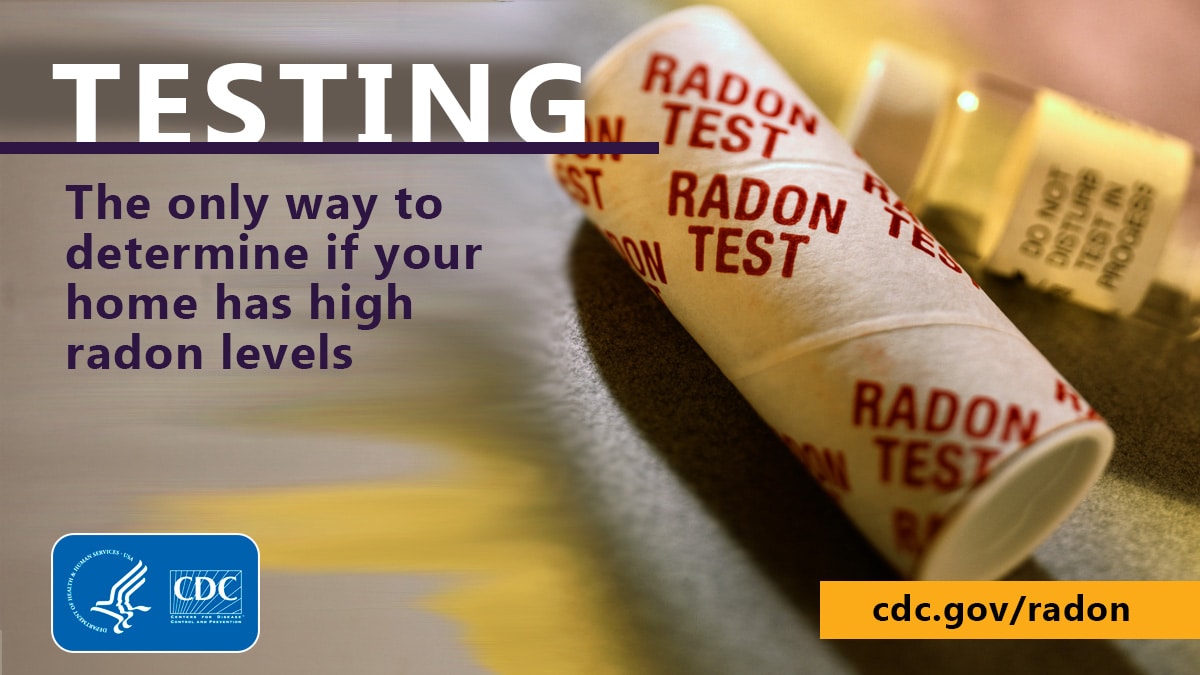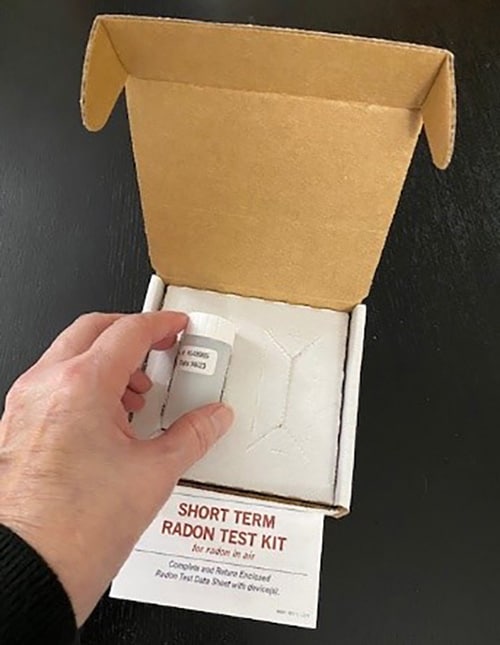Key points
- Testing is the only way to know if there are high levels of radon in your home.
- Radon testing can be completed by a radon tester or by using a do-it-yourself radon test kit from a hardware store.
- EPA recommends having a licensed professional install a radon reduction system if your radon level is at or above 4 pCi/L of air.

Why test your home
Testing your home is the only way to know if radon levels are high. If radon levels in your home are high, you and your family could be at risk for lung cancer from radon.
When to test your home
You should test your home's radon levels
- If it's never been tested or radon levels are unknown
- When preparing to buy or sell
- Before and after any renovations, especially after making any repairs to reduce radon levels
- Before making any lifestyle changes in the home that would cause someone to spend more time in the basement or lower level (like converting a basement to a bedroom or home office)
Ways to test your home
Contact your state radon office for specific information and resources in your area for testing. They can provide you with a list of qualified radon testers. You can either hire a radon tester or purchase a radon test kit from a hardware store and do it yourself. However, the Environmental Protection Agency (EPA) recommends hiring a qualified tester if you are buying or selling your home.

There are two general types of radon test kits: short-term and long-term kits.
Short-term kits
Short-term kits measure radon for 2–90 days for quick results.
Long-term kits
Long-term kits measure radon in your home for over 90 days. Long-term kits tell you your home's year-round average level. The longer the test, the better the results will reflect your home radon levels and your lifestyle.
Do it yourself kits
Your state radon office can give you information on where to get a test kit. Your state may offer free or discounted test kits. You can purchase a radon test kit online or in many retail or hardware stores. You can also order one through the National Radon Program Services.*
Once you have your kit
Follow all instructions carefully.
- Place a small measuring device in your basement or the lowest level of your home. The device must be raised three feet off the ground, in the middle of the room.
- If your home is in a multi-unit building, place the device in the lowest level within your unit.
- Once the test is completed, follow the directions on the test kit packaging. The test kit will tell you where to send the device to get the results.
Leave the test in place for the instructed amount of time.
- Leave it there for the amount of time instructed. Short-term testing can take 2–90 days and long-term testing takes more than 90 days.
- The exact length of time for testing depends on the specific test.
*The National Radon Program Services is maintained by Kansas State University through a Cooperative Agreement with EPA.
Understanding results
Radon is measured in units of picocuries per liter (pCi/L) of air. Radon is naturally found in outdoor air at very low levels and some radon will always be in your indoor air. According to EPA, the average radon level in American homes is about 1.3 pCi/L.
EPA recommends contacting a licensed professional to install a radon reduction system if your radon level is at or above 4 pCi/L of air. EPA also recommends taking action to reduce radon if your radon level is from 2 pCi/L through 4 pCi/L. There is no known safe level of radon. You should always aim to have the lowest radon levels to reduce the risk of lung cancer.
Next steps
The level of radon in your home determines the actions you should take.
- If you used a short-term test: Take a second test using either a short-term or long-term test. If you use a second short-term test, calculate the average of the two results.
- Contact a licensed professional to install a radon reduction system if: The average of two short term tests is ≥ 4 pCi/L, or results from any long-term test are also ≥ 4 pCi/L.
- Make sure you retest a few months after your home is fixed to see if radon levels were reduced.
- Consider installing a radon reduction system.
- Make sure you retest a few months after your home is fixed to see if radon levels were reduced.
- No action needed.
- Test your home again if you start living on a lower level (for example, if you turn your basement into a home office or extra bedroom).
To find out more about radon test kits, please see the EPA Radon Hotline and Information Resources.
If you are planning any major structural renovation, such as converting an unfinished basement area into living space, it is especially important to test the area for radon before you begin the renovation. If your test results indicate a radon problem, radon-resistant techniques can be included as part of the renovation. Because major renovations can change the level of radon in any home, always test again after work is completed.
For more information about testing your home, please visit:
